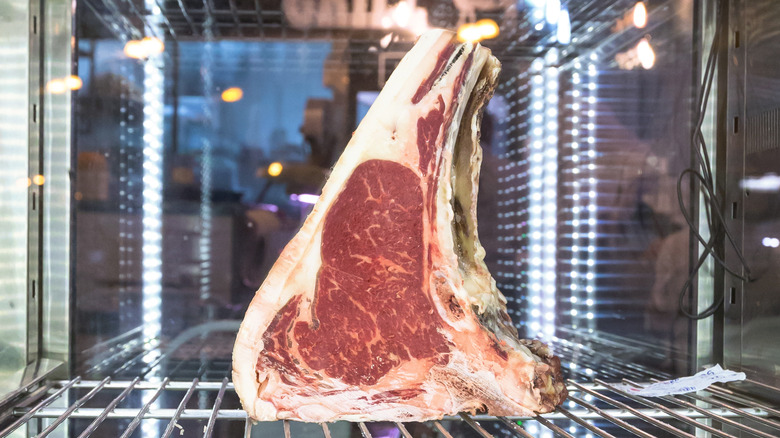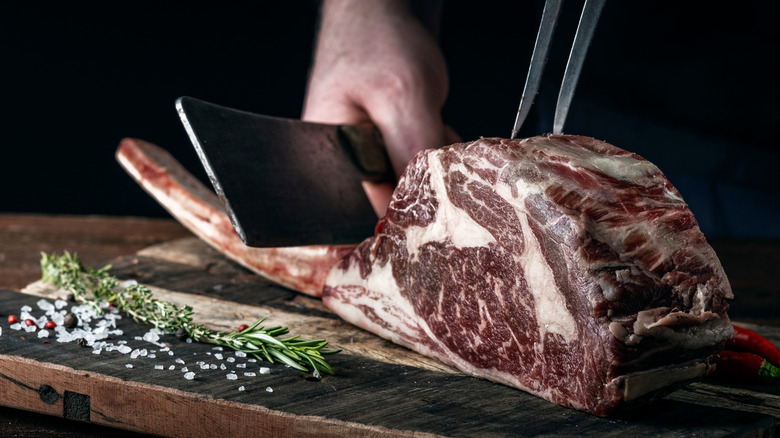The Reason Large Cuts Of Steak Are Ideal For Dry Aging
Want to grill up better steaks? The secret to success is dry aging. A unique process where meat is left to rest in a temperature and humidity-controlled area, dry-aging triggers enzymes to break down the meat's connective tissues. As a result, this produces a more tender steak. It also concentrates flavor, which makes the meat all the more drool-worthy. Yet, despite its many benefits, not all cuts are suited for dry aging. Since size matters, it's best to opt for a larger cut, and here's why.
When it comes to selecting a steak to dry age, always remember: The bigger, the better. Given that dry aging is a process that focuses on evaporation, the meat loses a significant amount of moisture. In fact, steaks can lose up to 30% of their weight as they age. Unsurprisingly, this massive depletion of moisture can have serious effects on modestly sized steaks, causing them to turn overly dry and rubbery once cooked. However, that's not true of larger cuts.
Based on their size, bigger steaks have higher levels of moisture. It's precisely all this moisture that allows the meat to effectively dehydrate over time without the risk of totally drying out and toughening.
The large and in-charge steaks destined for dry aging
Generously sized steaks that weigh upwards of at least 4 pounds work best. But that's not the only factor to bear in mind when selecting meat. The presence of bones, along with substantial marbling, are other favorable traits to seek out. Not only can they protect against rapid moisture loss and spoilage, but they can also work to intensify flavor during the cooking process.
Although there is room to experiment with cuts, there are several jumbo-sized steaks that are best for dry aging. We recommend the ribeye, New York strip, or even sirloin steak for good results. And you can't go wrong with an impressively enormous tomahawk or T-bone steak. With a suitable cut chosen, dry aging can commence.
To kick off the process at home, lay the meat on an elevated rack, before placing it in the fridge (preferably with a fan) to dry. Home fridges will do the job; just make sure the steak stays away from moisture. You could invest in a small home aging chamber for a more controlled environment if you have space. The steak can be left to rest from 14 to 60 days, developing deeper and funkier flavors over time. Once it's aged to your liking, trim away any discolored or hard bits. Then, all that's left to do is grill up the flavorful steaks and think about accompaniments — we're partial to herby compound butter, but there's no shortage of tasty pairings.

